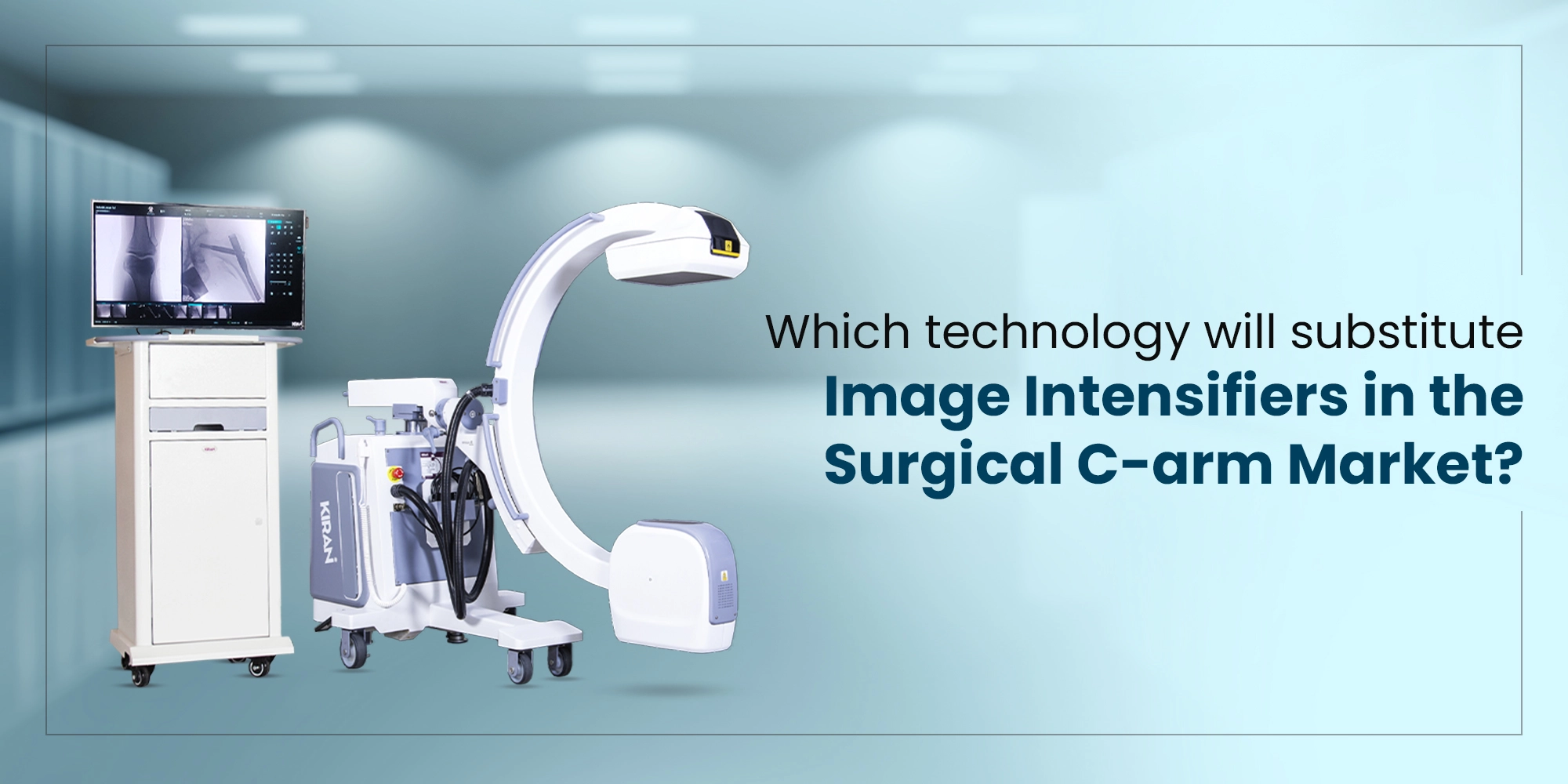Over the decades, surgical C-arm market has seen a noteworthy shift from traditional image intensifiers (IIs) to flat panel detectors (FPDs). For years, charge-coupled device (CCD) sensors, paired with an image intensifier tube (II), were integral to the Radiology Imaging Units (RIUs) used in X-ray imaging within C-arms. However, recent changes have led to a decline in the use of II-CCD RIUs.
Several factors have contributed to this transition. The shutdown of factories producing image intensifier tubes and the rising demand for advanced imaging capabilities, such as 3D imaging, have driven the industry away from II-CCD technology. In response, manufacturers are increasingly turning to alternative technologies, resulting in the adoption of FPDs. Currently, three primary flat panel detector technologies are gaining traction in the market: amorphous silicon (a-Si), indium gallium zinc oxide (IGZO), and complementary metal-oxide semiconductor (CMOS).
As the industry continues to change, the competition among these technologies to replace image intensifiers in the surgical C-arm market is increasing. Each offers distinct advantages, and their development will shape the future of dynamic X-ray imaging.
Surgical C-Arm Technology That Will Lead the Way
The Flat Panel Digital C-Arm is known for its exceptional performance and high-precision imaging capabilities, particularly when using IGZO (Indium Gallium Zinc Oxide) technology. Here’s a breakdown of the key advantages of IGZO detectors in this context:
- High Mobility: IGZO has significantly higher electron mobility compared to amorphous silicon (a-Si). This means that the electrons in IGZO move more quickly and efficiently. This high mobility makes IGZO detectors particularly well-suited for applications requiring rapid imaging speeds, such as dynamic imaging in surgical procedures. The quick response time ensures that images are captured with high clarity and minimal delay, which is crucial for real-time decision-making in surgery.
- Low Noise: IGZO detectors are designed to have a lower off-leak current than amorphous silicon detectors. The off-leak current is the unwanted electrical current that flows when the device is not actively capturing an image. Lower off-leak current translates to reduced electronic noise in the imaging signal, which improves the overall signal-to-noise ratio. As a result, IGZO detectors provide clearer and more accurate images, which is essential for detecting subtle anatomical details during surgical procedures.
- Accurate Detection: One of the standout features of IGZO as a semiconductor is its intermittent operational mode. This means that IGZO only conducts when it needs to, minimizing continuous noise generation. The brief noise intervals allow for more precise detection of faint signals. This characteristic is particularly beneficial in medical imaging, where the ability to detect minute differences in tissue density can significantly impact diagnosis and treatment.
- Enhanced Performance: Compared to amorphous silicon detectors, IGZO detectors demonstrate superior performance across various metrics. The enhanced electron mobility and reduced noise result in better image quality, with higher contrast and less graininess. This improved performance ensures that images are not only clearer but also more reliable, reducing the likelihood of misinterpretation during surgery.
- Improved Imaging Capabilities: IGZO-based flat panel detectors (FPDs) offer several improvements over traditional technologies. They enhance key imaging parameters such as electronic noise, image lag (the delay between the actual movement and the display on the screen), and noise equivalent quanta (NEQ), a measure of image quality that takes into account both the noise and the signal strength. These improvements lead to superior 2D and 3D imaging performance, allowing for more detailed and accurate visualization of complex anatomical structures. IGZO detectors have much better pixel and matrix quality compared to amorphous silicon detectors, which reduces graininess and enhances the overall sharpness and clarity of the images.
IGZO technology in flat panel digital C-arms offers substantial advantages over traditional amorphous silicon detectors. These benefits make IGZO an increasingly popular choice for advanced surgical imaging applications, providing clinicians with the tools they need to achieve optimal patient outcomes.

